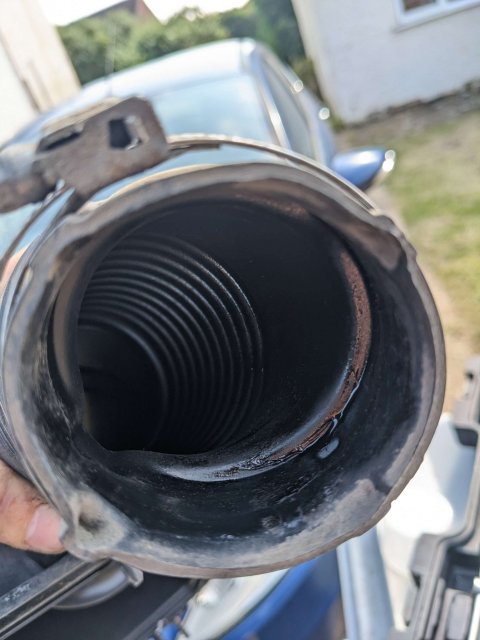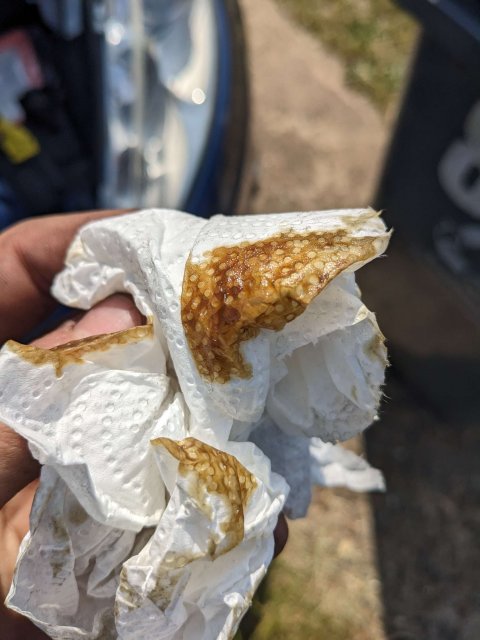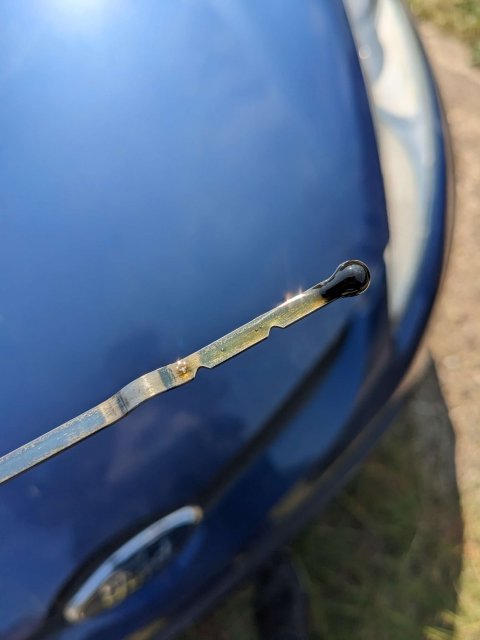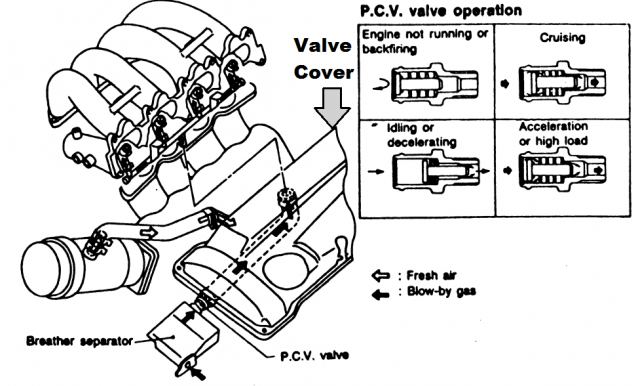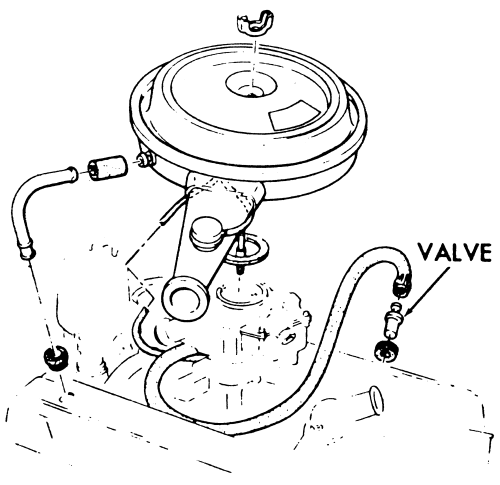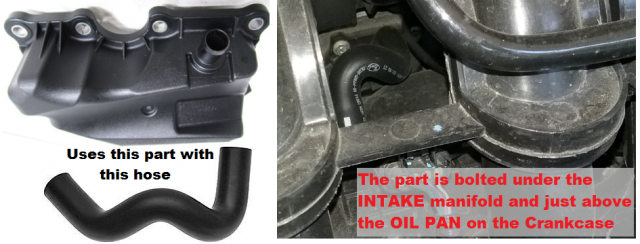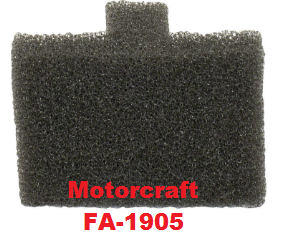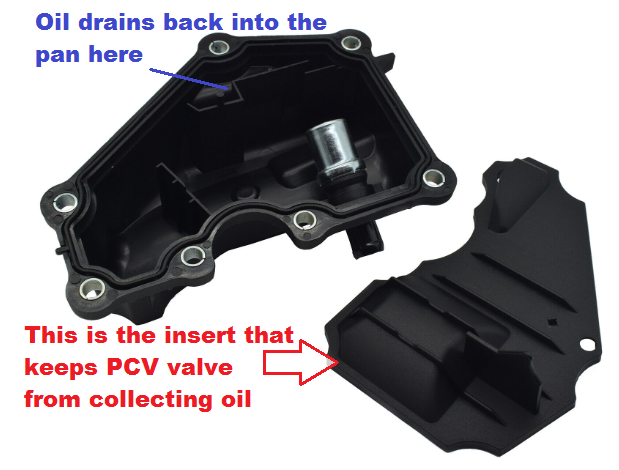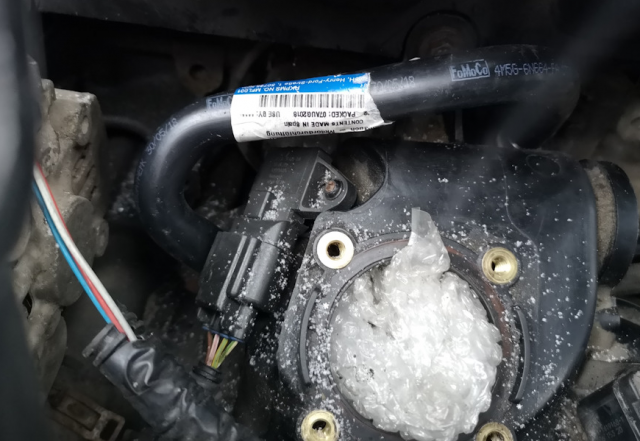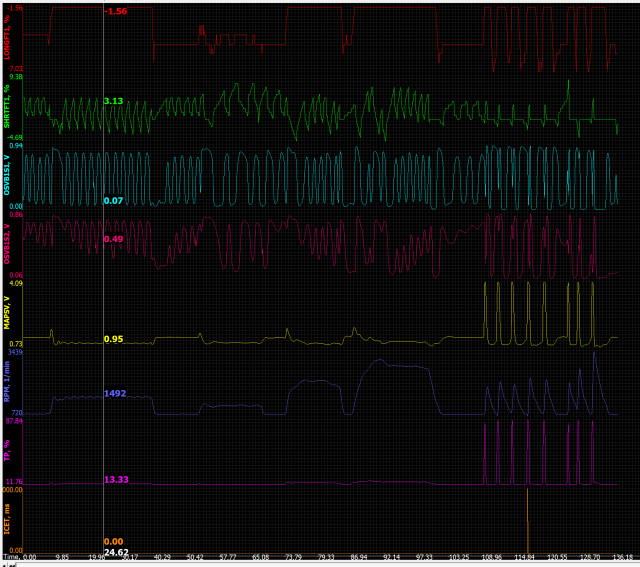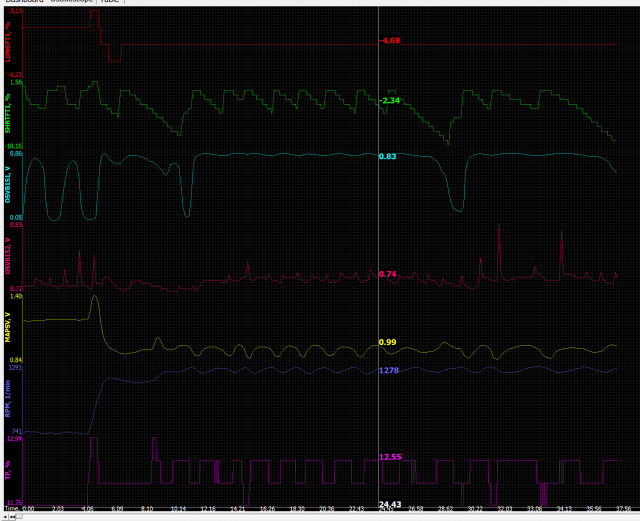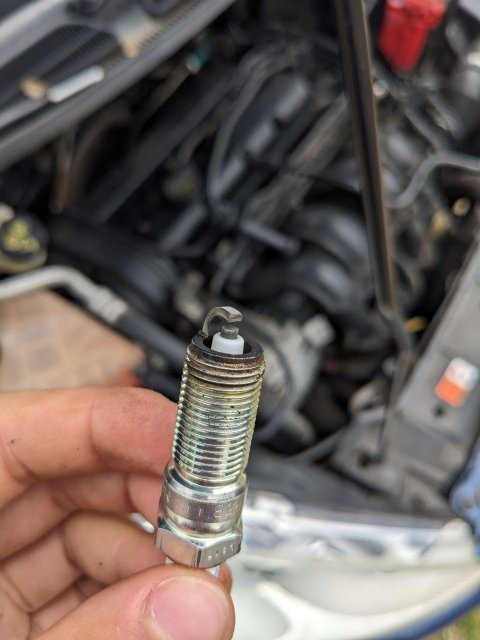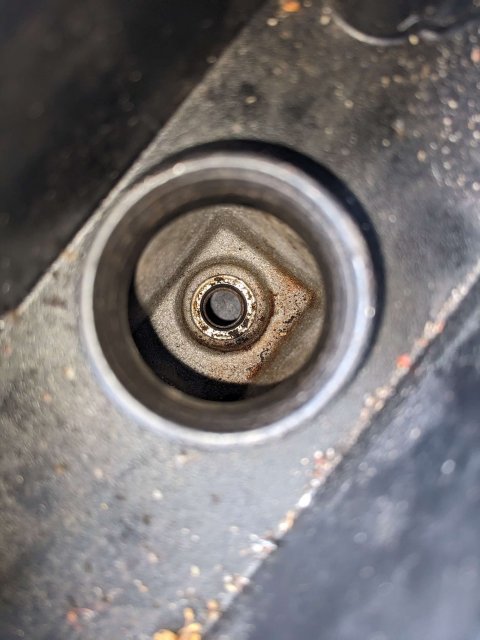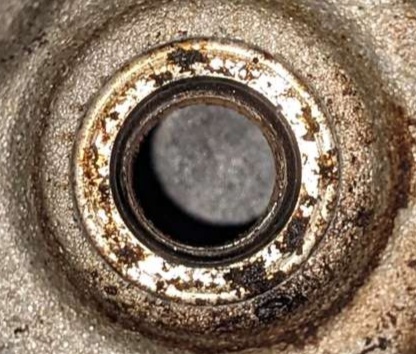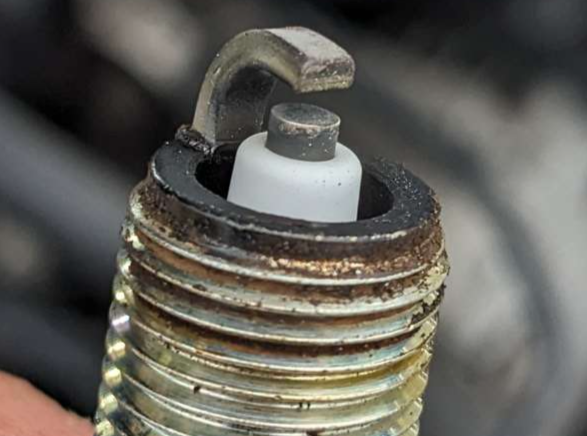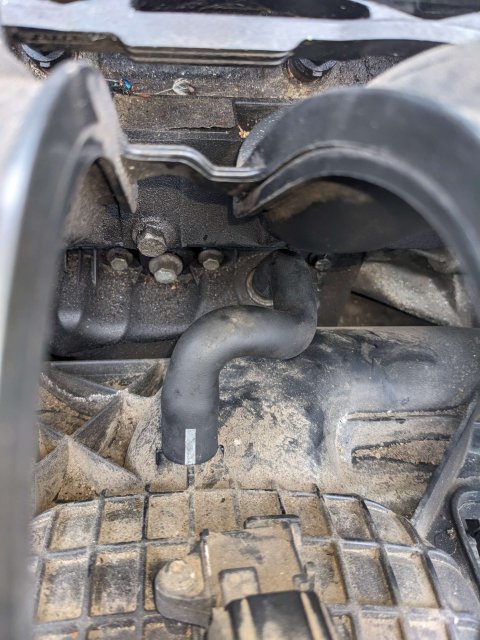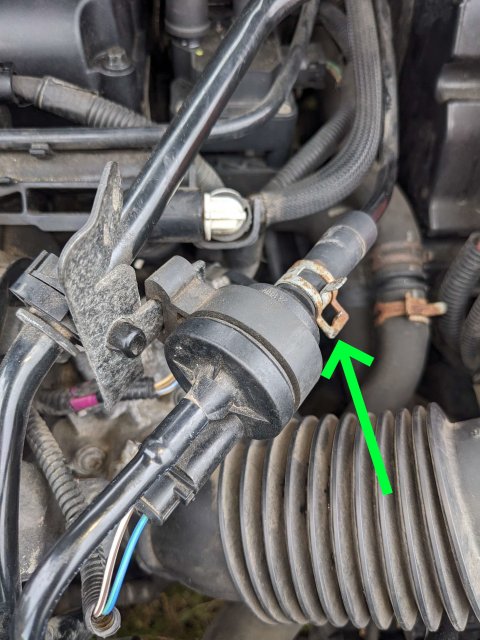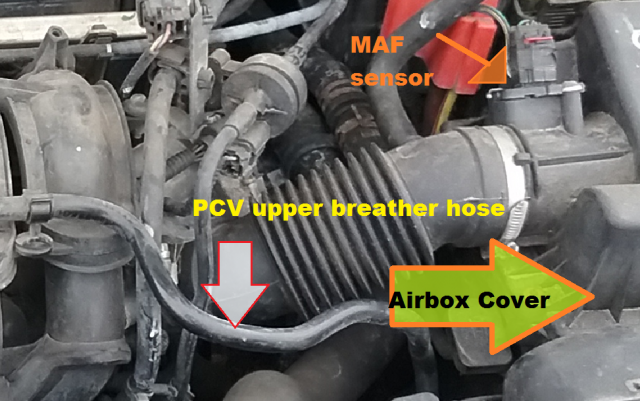You may have had someone at the last oil change - overfill it.
If it's relatively new fresh oil- the PCV valve sucks it OUT OF the engines crankcase - and into the INTAKE manifold. That is where the throttle body and that snorkel mount to.
Don't go over 4Qts or 3.8L when they add new oil - (with new filter) if you can avoid it, for you get results like that - it will force the motor to try and reburn that oil - it's only supposed to burn fumes from the crankcase - so the oil level - being too high (overfilled) the PCV valve has no choice but to suck in that oil unit the crank oil level drops and it pulls in the foul air not the oil - out of the crankcase.
The PCV gets its power to do that, from the vacuum the Intake manifold provides - so the PCV is a pre-set height in the engine (specific location) so the oil level - if too high, can submerge the PCV valve in oil - so all it does or can do is - done with that oil.
This also happens when the DON'T change the filter at the same oil change - easily enough to make the mistake of overfilling it.
The best way to describe this...so it helps.
In GM and many others - the PCV valve itself - still goes to the manifold for vacuum to get the "foul air" in the crankcase - back into the cylinders to get reburned. But from the TOP of the valve cover - which you get the fresh air in from another way via the valve cover using a Breather - with the air inlet going on the opposite side or opposite cylinder bank..
View attachment 8079
Which, is all well and good, as long as you have clear, or clean passages large enough and not plugged with oil - to vent the same crankcase fumes from the cylinder blow-by that happens on every combustion stroke.
The FORD way of doing it - uses the PCV valve on the CRANKCASE itself. - means its towards the bottom - where the pistons roam and crankshaft rolls - the blow-by gases are the most prevalent here...but then too, is the oil that drains down from the oil drain passages from the upper cylinder head that contains the valve train - it basically rains oil and forms a fog of fumes here...
So, the Oil level SHOULD NOT interfere with this design, but this is an Achilles heel of the Sigma motor design - it sucks in oil that if the oil level is left too high can not only flood the cylinders - but foul out the spark plugs and can damage the engine from the PCV valve being unable to pull fumes - it's pulls in oil back into the intake manifold.
Damage? How? By excessive fluid in the combustion chamber - forcing compression ratios to be too great and blow the cylinder head gasket or the piston ring seals - risking damage to the engine.
Now that you have all that oil and it's fumes showing up in the snorkel - might want to change out the Air filter and the breather sponge located in the Air box too. The breather sponge fits - snuggles in - to the bottom piece of the airbox - that is where the upper breather hose routes to the fitting there.
So we are on the same page...
The Fiesta Motor from "J" engine of the Sigma line...
It's PCV valve - it is in two pieces, a outer shell which houses the PCV valve itself - and the baffle unit clamshells inside it - these two work to separate the oil from the fumes and let the PCV valve pull just the fumes.
I hope you're still reading this...
The oil showing up in the snorkel is pretty extreme - and rough idle means there is still residual effects from the moment this happened. I say moment because when the engine really revs up - if the pressures inside the motor got too much - the baffle could have dislodged, shifting it's position or cracked open. At high rev, the oil spray can really wash the inner sides of the crankcase - so the oil coating is not new, but it's also not a normal thing to happen. Understandably the PCV valve will collect a lot more fumes and oil spray when the revs are up and the motor is whirring along. It is when the amount of it becomes excessive it might indicate another type of damage, that if left to the next oil change - it may be too late to fix by then, it may require engine rebuild.
What am I talking about?
That second piece - the insert that keeps the oil from splashing into and onto the PCV valve and thru it.
When the PCV assembly is mounted - those two pieces are pressed and bolted into the case of the motor - as a sandwich so it only gets access to the insides thru two ports one near the top and one to let the oil it collected - condensed out - drain out and back into the engine to drip back into the oil pan. So it's pretty secure, but the PCV valve is the one that can get plugged or the grommet that seats and forms the vacuum seal along with the bolted seal sides - the PCV valve can get compromised in two ways - the hose kinking and pinching from the excessive pressure of vacuum during a high rev deceleration or the PCV valve in age, can stick in a position that lets in too much fumes from the motor causing a rough idle and a dangerous condition of blowing the engines own oil seals caused by excessive pressures.
Again, an overfilled oil level and a high revving motor are the combination I'm worried that may have hurt your vehicle.
IF that baffle is dislodged or shattered, you have wounded the motor and it may only be a matter of time before you lose it.
Because - if the baffle is cracked or chunks of it has broken and leaving open holes, the baffle lets in too much oil - or air - at any rev speed - the oil will get into and sucked thru the PCV valve - pulling and lowering the oil level until the amount of oil left in the pan is not enough to pump thru the system - the PCV valve sucked it out and blew it out the exhaust and thru the catalyst - which once that is plugged - is far more of an expense to replace the exhaust system on top of the cost of the rebuild due to loss of oil and it's pressure from the motor sucking itself dry.
IF the opposite is true, where the PCV grommet or case has cracked, you can lose oil thru the cracks in the seal it' forms and with no way to reburn those fumes -they collect and exit out any simple port - including the PCV 's own and you can lose oil and run lean thru those conditions.
Now, understand that the 1.25L Petrol is UK and not sold in the USA, so this post was geared more for the USA enthusiast that uses the 1.6L Fiesta using the Sigma line of motor.
The 1.25L is based upon the Zetec (Duratech) approach - although both have a similar root, the refinements are different and the Zetec was phased out as being from a previous generation Ford produced.
View attachment 8087
Your valve is located on the Block, near the throttle body - with the breather hose line to the top of the valve cover.
